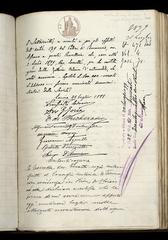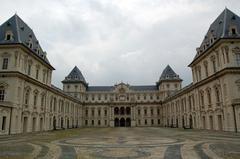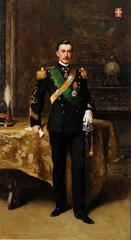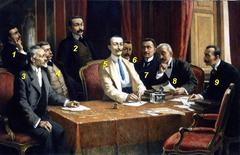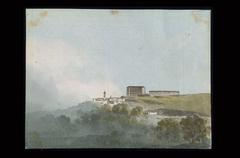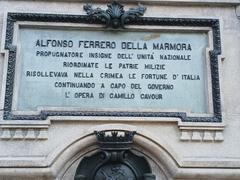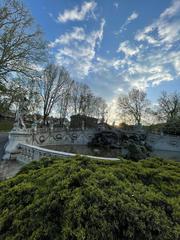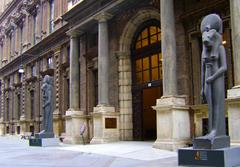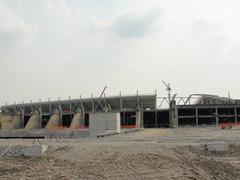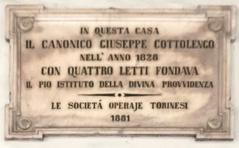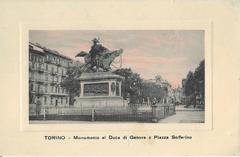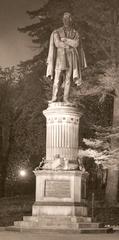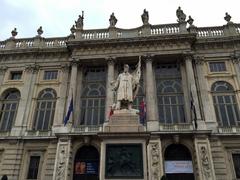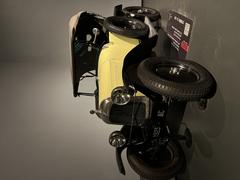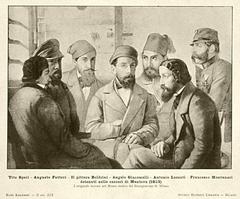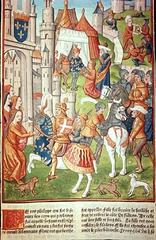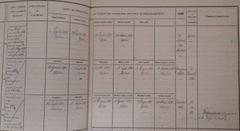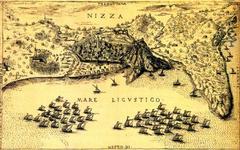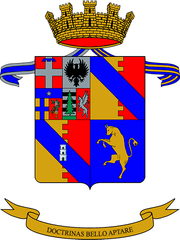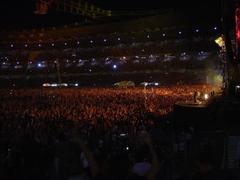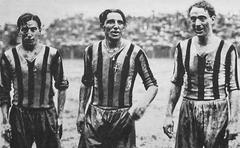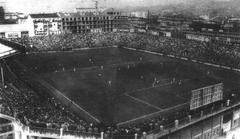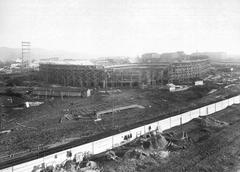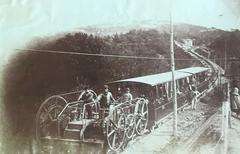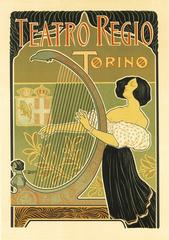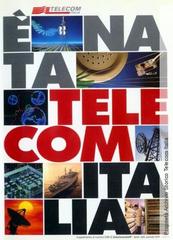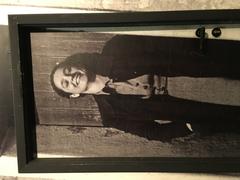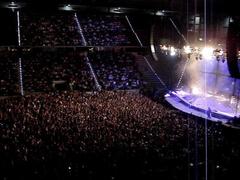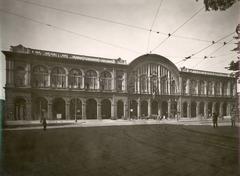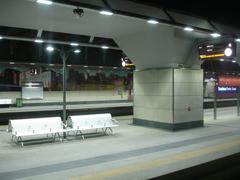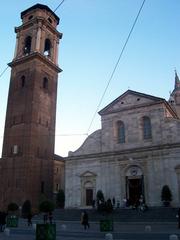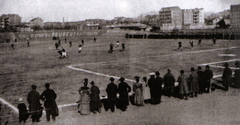
Santuario della Consolata: Visiting Hours, Tickets, and Complete Travel Guide for Turin
Date: 04/07/2025
Introduction
The Santuario della Consolata, or the Sanctuary of Our Lady of Consolation, stands as a central symbol of religious devotion, artistic achievement, and cultural continuity in Turin. With origins dating back to early Christianity, it is an essential destination for pilgrims, history enthusiasts, and lovers of architecture. This guide provides a thorough overview of the sanctuary’s history, significance, architecture, practical visiting information, and insider tips to enrich your experience in Turin.
Historical Overview
Early Foundations
The Santuario della Consolata occupies a site with roots stretching to the 4th century CE, where archaeological evidence suggests a Christian place of worship may have replaced a Roman temple to Apollo (MuseoTorino). By the 10th century, records confirm the presence of Santa Maria di Consolazione, serving as a focal point for Marian devotion. The sanctuary’s location—just outside the ancient Roman walls—ensured its role as both a spiritual and civic landmark.
Medieval and Renaissance Transformations
In the Middle Ages, the sanctuary was repeatedly rebuilt and expanded. Notably, in 1104, Bishop Landolfo consecrated a new altar and fostered the cult of the Consolata, making the church a hub for Marian pilgrimage. The veneration of the Byzantine icon of the Virgin Mary became central to the sanctuary’s identity, drawing countless devotees (Turismo Torino).
The Renaissance period saw further enhancements, especially with the arrival of Guarino Guarini in the late 17th century. His Baroque transformation from 1678 to 1706, including the elliptical dome, introduced dramatic forms and a unique play of light, leaving a lasting architectural legacy (Guarini’s biography).
18th–19th Century Enhancements and Civic Role
Filippo Juvarra’s 1729 neoclassical portico and bell tower further enriched the sanctuary’s silhouette (Juvarra’s works), while the 19th century brought additional chapels and ex-voto offerings, reflecting the site’s ongoing religious significance. Despite challenges during the Napoleonic era, the sanctuary remained a bastion of popular devotion and social outreach, ultimately being elevated to a minor basilica by Pope Pius X in 1904 (Vatican News).
Architectural Highlights
A Blend of Styles
The Santuario della Consolata exemplifies Turin’s layered architectural history. Its features include:
- Romanesque Bell Tower: The oldest part, dating to the Middle Ages, with characteristic arches.
- Baroque Dome: Guarini’s elliptical dome, notable for its striking geometry and interplay of light (Catholic Shrine Basilica).
- Neoclassical Façade and Portico: Designed by Juvarra, featuring Corinthian columns and a grand pediment (Renato Prosciutto).
- Side Chapels: Added by Carlo Ceppi at the turn of the 20th century, blending Baroque, Rococo, and Neoclassical styles.
- Ancient Roman Wall: Portions of the original Roman city wall are integrated into the sanctuary structure.
Artistic Treasures
- Frescoes and Stuccoes: Works by Giovanni Battista Crosato, Giovanni Battista Alberoni, Bortoloni, and Galliari.
- High Altar: Crafted by Juvarra, adorned with white marble angels by Carlo Antonio Tantardini and the revered Madonna della Consolata icon (Turismo Torino).
- Ex-Voto Gallery: A unique visual record of centuries of gratitude—paintings, plaques, and military memorabilia (Dear Italy).
 Alt text: Exterior view of Santuario della Consolata, a historic sanctuary in Turin.
Alt text: Exterior view of Santuario della Consolata, a historic sanctuary in Turin.
Religious and Cultural Significance
Marian Devotion and Miracles
The heart of the sanctuary is the venerated Byzantine icon of the Madonna della Consolata, Turin’s patroness, credited with countless miracles, especially during plagues and the 1706 siege (Turin official website). Annual processions and the June 20th feast draw thousands of pilgrims (Vatican News; Thrillophilia).
Civic and Community Role
Beyond its spiritual dimension, the sanctuary is a hub for cultural events, concerts, and charitable outreach, embodying the compassionate spirit at the heart of Turin’s social fabric (Christian Directory).
Visitor Information
Opening Hours
- General Hours: 7:00 AM – 7:00 PM daily (hours may vary on holidays and special events; always check the official website for updates).
- Mass Times: Multiple services daily, especially on Sundays and feast days (Christian Directory).
Admission
- Entry: Free for all visitors. Donations are welcome to support upkeep and charity programs.
Accessibility
- Mobility: Wheelchair accessible throughout the main sanctuary; some chapels and the crypt have steps or uneven flooring. The “Secret Undergrounds” tour is not accessible for wheelchairs.
Dress Code and Photography
- Attire: Modest dress is required; cover shoulders and knees.
- Photography: Non-flash photography is generally permitted; always be respectful, especially during services.
Getting There
- Location: Piazza della Consolata, centrally located near Via Consolata and Via Carlo Ignazio Giulio (Wikipedia).
- Tram: Line 13 stops nearby.
- Bus: Line 19 and others serve the area (Europe of Tales).
- Metro: “Porta Susa” and “Porta Nuova” stations are within walking distance.
- Parking: Limited street parking; public transport is recommended due to traffic restrictions in the historic center.
Tours and Special Experiences
Guided and Self-Guided Visits
- Self-Guided: Explore with informational plaques and printed guides (available in Italian and sometimes English).
- Guided Tours: Offered periodically for groups or special events; booking via the Turin tourism office.
Secret Undergrounds Tour
- Discover ancient tunnels, tombstones, and mysterious symbols beneath the sanctuary and Quadrilatero Romano (Turismo Torino Secret Undergrounds).
- Note: Conducted in Italian, not suitable for children under 6 or those with claustrophobia; advance reservation required.
What to See Inside
- Main Sanctuary: Lavish Baroque chapels, polychrome marble, and intricate stucco (TripHobo).
- High Altar: Designed by Juvarra, featuring the venerated Madonna della Consolata.
- Ex-Voto Gallery: Hundreds of votive offerings and military memorabilia (Dear Italy).
- Crypt of the Grazie: Houses relics and a copy of the Marian icon (open occasionally).
- Chapels: Dedicated to various saints and devotions (Angoli Torino).
- Romanesque Bell Tower: Oldest monument after the Roman ruins (external viewing only; generally closed to the public).
Best Times to Visit
- Weekday Mornings: For peace and contemplation.
- Feast Day (June 20): Experience the Madonna della Consolata procession and vibrant local traditions.
- Special Events: Check the official schedule for concerts, liturgies, and exhibitions.
- Allocate 1–1.5 Hours to fully appreciate the sanctuary and its chapels (TripHobo).
Nearby Attractions
- Café Al Bicerin: Across from the sanctuary, famous for its historic “bicerin” drink (Dear Italy).
- Quadrilatero Romano: Ancient district with cobblestone streets, shops, and eateries.
- Other Religious Sites: Cathedral of St. John the Baptist (Shroud of Turin), Basilica of Superga (Europe of Tales).
Visitor Tips
- Arrive early or late afternoon for a quieter atmosphere.
- Pair your visit with a stroll through the Quadrilatero Romano or a coffee at Al Bicerin.
- Check Mass times before your visit to plan accordingly.
- Maintain silence and switch phones to silent mode.
- Watch personal belongings in crowded areas.
Frequently Asked Questions (FAQ)
Q: What are the opening hours?
A: 7:00 AM to 7:00 PM daily; hours may vary during holidays or events.
Q: Is there an admission fee?
A: No, entry is free. Donations appreciated.
Q: Are guided tours available?
A: Yes, for groups and special occasions. The “Secret Undergrounds” tour requires advance booking.
Q: Is the sanctuary wheelchair accessible?
A: The main sanctuary is accessible, but some chapels, the crypt, and the underground tour are not.
Q: Can I take photographs inside?
A: Non-flash photography is permitted; respect worshippers and ongoing services.
Summary and Final Tips
The Santuario della Consolata is a living testament to Turin’s religious, cultural, and architectural legacy. Its origins span from early Christianity through medieval devotion to Baroque and Neoclassical grandeur, offering a unique journey into the city’s spiritual and artistic evolution. The revered Madonna della Consolata icon continues to inspire faith and devotion, especially during the annual June 20th feast (Vatican News; Thrillophilia).
The sanctuary welcomes all with free admission, wheelchair accessibility, and a range of guided tour options—including the fascinating “Secret Undergrounds” experience (Turismo Torino Secret Undergrounds). Its location near Turin’s main attractions and amenities makes it a must-visit highlight for any itinerary.
For up-to-date visiting information, special events, or to enrich your Turin experience, download the Audiala app and follow official tourism channels. The Santuario della Consolata is more than a monument—it’s a welcoming, vibrant center of faith, history, and community.
Sources
- Santuario della Consolata in Turin: History, Visiting Hours, Tickets, and Travel Tips, MuseoTorino (MuseoTorino)
- Turismo Torino: Official Tourism Website (Turismo Torino)
- Vatican News: History of the Consolata Shrine (Vatican News)
- Guarini Biography, Britannica (Guarini’s biography)
- Juvarra’s Works, Turismo Torino (Juvarra’s works)
- Comune di Torino, Official City Website (Comune di Torino)
- Christian Directory: Consolata Sanctuary Listing (Christian Directory)
- Thrillophilia: Santuario della Consolata Overview (Thrillophilia)
- Turismo Torino Secret Undergrounds Tour (Turismo Torino Secret Undergrounds)
- Europe of Tales: Turin City Guide (Europe of Tales)
- Dear Italy: Sanctuary Consolata (Dear Italy)
- TripHobo: Santuario Basilica La Consolata (TripHobo)
- Angoli Torino: Santuario della Consolata (Angoli Torino)
- Renato Prosciutto: Santuario La Consolata (Renato Prosciutto)
- Catholic Shrine Basilica: Consolata Sanctuary (Catholic Shrine Basilica)
- Hidden Architecture: Santuario della Consolata (Hidden Architecture)




